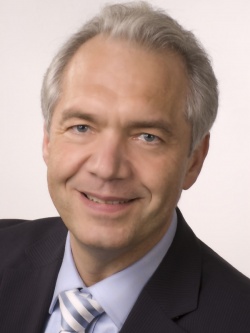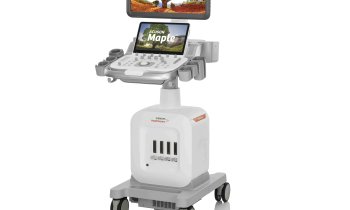The curious tale of abandoned plans and dismantled hopes
A prototype for proton and ion therapy has been used clinically in Heidelberg since 2009. Built jointly by Siemens and GSI (Helmholtz Centre for Heavy Ion Research) in Darmstadt.

Siemens committed to two further units in Marburg and Kiel, with a third under development in Shanghai. However, soon after a successful trial the manufacturer terminated both the Marburg and Kiel contracts, announcing it were backing out of particle therapy. Among its reasons: Siemens’ 3rd Quarter of 2011 results showed liabilities of some €381 million. Although almost ready for use, Siemens began to dismantle the high-performance Kiel facility. However, the Shanghai equipment is to be handed over in 2013. To meet that deadline, Siemens is developing the machine’s technology still further, using its still-owned Marburg machine as a test unit. What will happen to it after 2013? Daniela Zimmermann, Managing Director of European Hospital, asked Professor Jürgen Dunst, President of the German Society of Radio Oncology (DEGRO) and Director of the Clinic for Radiotherapy at University Hospital Schleswig-Holstein (UK-SH) in Kiel
Among its other assets, proton therapy (PT) is important because healthy tissue surrounding a tumour receives less radiation from protons and carbon dioxide ions than from conventional radiotherapy, Professor Dunst explained. ‘All international specialist medical associations assume that this results in a relevant advantage for around 10% of all radiotherapy patients. In the medium-term, particle therapy will therefore play an important role, and the respective equipment is being manufactured all over the world.
‘The technology co-manufactured by Siemens is in use in Heidelberg, it also works in Marburg and it will work in Shanghai – and it would have worked in Kiel. Marburg’s PT unit is already CE-certified.’
Why did Siemens depart from particle therapy?
‘It’s not actually an exit, because Siemens is still developing this technology until its routine clinical use. The Shanghai project is scheduled for completion according to plan. Siemens only terminated the contracts in Marburg and Kiel because they could not deliver the agreed service parameters in these locations.
‘Reimbursements made by German medical insurers for particle therapy by international comparison are very, very low, i.e. only €20,000 for a complete series of treatments lasting several weeks. In other European countries reimbursement is between €40-50,000, and $70-100,000 in the USA. In Germany, therefore, the equipment must be utilised to the point where twice as many patients must be treated per year to finance such projects – unless, as in Heidelberg’s case, the equipment is being financed through research funds. Although Siemens initially agreed to this double capacity, they couldn’t comply with it – and so far no other manufacturer has been able to achieve this. The Rinecker Proton Therapy Centre in Munich and the Proton Therapy unit in Essen have the same problem.
‘Nonetheless, despite the limited number of patients and Germany’s comparatively low reimbursement level, the proceeds would have been sufficient to finance the running costs. Even with the Heidelberg unit the proceeds are to cover the running costs along with the investment costs. It’s only the refinancing of a purchase price of over €100 million that can’t be covered.
‘From a medical point of view, dismantling the particle therapy unit in Kiel is completely incomprehensible and would not have been necessary. Siemens even rejected a purchase offer, opting instead to dismantle the unit at the firm’s own cost. I cannot imagine a commercially sensible strategy here because the same development costs arise in Shanghai and there’s no saving. As a doctor I’m disappointed that patients are subsequently missing out on a chance of treatment because this kind of equipment cannot be replaced overnight. As a scientist I don’t agree that medical technology developed in Germany and at the forefront worldwide is made available in China for further clinical research whilst the technology is handled in Germany.
The Kiel particle therapy project was considered the largest PPP project in German healthcare. Whose fault is it that this project could not be realised?
‘Firstly, we should not talk about a “fault“, but about responsibility towards patients and the research location, Germany. Secondly, with such a complex project the responsibility can’t only be attributed to one party, but also to many others, although currently it is obviously a problem for Siemens.’
After Kiel’s unit is dismantled, will there be a shortage in radiotherapy provision?
‘Possibly. What is clear is that all proton therapy units manufactured in Germany put together will be able to treat a smaller, total number of patients than we assumed only a few years ago. What is also certain is that these high-technology projects have long realisation phases with at least 5-10 years between planning and utilisation. It’s therefore important to utilise existing equipment. Dismantling of a facility almost ready for use is not a solution but a poor show.
Could the Marburg unit be saved?
‘I sincerely hope so. Unlike the Proton Therapy unit in Kiel, it’s already CE-certified. All those involved should seriously consider all options available to facilitate clinical use. Dismantling the Marburg facility would also be costly, which can’t be in the shareholders’ interest. The worldwide unique dismantling of the Kiel equipment should be just a one-off “memorial”.
PROFILE
Since 2005, Westphalian-born Dr Jürgen Dunst has been Professor for Radiotherapy at the University of Lübeck and Director of the Radiotherapy Clinic in the Lübeck campus at Schleswig-Holstein University Hospital. The 54-year-old current president of the German Society of Radio-Oncology (DEGRO) has long campaigned for a greater understanding among patients, colleagues and health politicians alike that radiotherapy is an important part of cancer treatment.
His research commitments centre on simultaneous radio-chemotherapy, organ-preserving procedures for breast, bladder, laryngeal and throat cancers and tumour therapy for children.
24.01.2013











